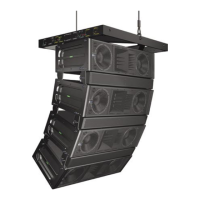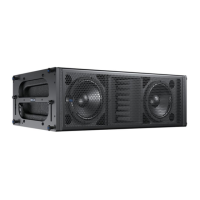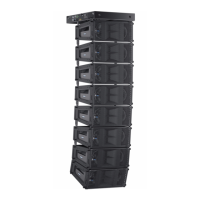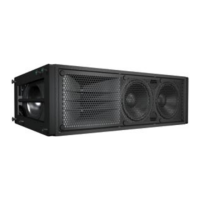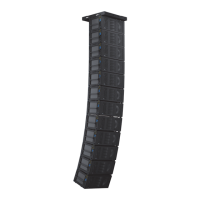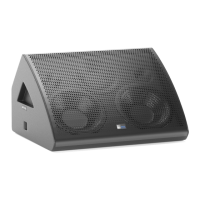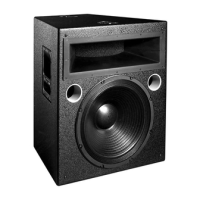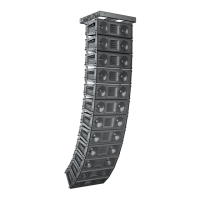3
INTRODUCTION
ADVANCED M SERIES TECHNOLOGY
MILO was created specically as a modular, exible design
solution for high-power systems in medium to large venues.
In size and weight, MILO ts into the M Series between
the M3D and the M2D; in output power and operating
frequency range, it scales more closely to the M3D.
The MILO loudspeaker is a four-way design. The lowest
frequency range, from 60 Hz to about 300 Hz, is reproduced
by dual 12-inch cone drivers working in tandem, each
powered by a dedicated amplier channel with 1125
watts of peak output. The drivers are a proprietary design
employing neodymium magnets for higher efciency and
power handling with reduced weight.
To assure the smoothest response in the critical midrange
and crossover region, MILO incorporates a complex active
crossover design. In the low-mid frequencies, the crossover
feeds only one of the two 12-inch drivers while rolling off
the other driver. This technique eliminates interference
between the drivers that would otherwise occur at shorter
wavelengths, while at the same time maintaining optimal
polar and frequency response characteristics at the
crossover frequencies.
MILO employs two REM™ ribbon emulation manifolds for
the separate mid-high and very-high frequency sections,
each coupled to individual constant-directivity horns. REM
is a proprietary coupling device that introduces driver
output to the horn throat across a very short path (three
inches for the mid-high section and 1.5 inches for the
very-high section), effectively controlling the output, but
with dramatically reduced distortion in comparison to other
techniques. MILO’s mid-high section (560 Hz to 4.2 kHz)
uses a single 1.5–inch exit, 4-inch diaphragm compression
driver powered by a dedicated 560-watt amplier channel.
The very high-frequency section utilizes three, 0.75–inch
exit, 2-inch diaphragm compression drivers to produce
extraordinary power and clarity, and extend operating
frequency range up to 18 kHz. Power for the very high-
frequency section is supplied by a dedicated 1125-watt
amplier channel with enough headroom to reproduce all
the dynamics of the upper frequency range.
NOTE: Complete acoustical and electrical
specications are covered in Appendix B.
The MG-3D/M multipurpose grid accommodates multiple
hanging congurations for up to 24 MILO loudspeakers (or
the equivalent weight of MILO, M3D, M3D-Sub and M2D or
any other relevant combination). The MG-3D/M grid allows
multipoint support and bridles. Ground stacks of up to six
MILOs (or the equivalent height of MILOs and M3D-Subs)
may be achieved.
MILO is truck-smart. Exterior cabinet dimensions are ideal
for both European and US truck widths. The optional MCF-
MILO caster frame allows smooth transport of stacks of
up to four MILO loudspeakers and facilitates the use of
forklifts. A range of rugged protective transport covers is
also available. See Chapter 4 for additional information.
The Meyer Sound MAPP Online® acoustical prediction
software allows you to quickly determine the coverage,
frequency response, impulse response and maximum
output of arrayed MILO loudspeakers.
Information and specications are applicable as of the date
of this printing. Updates and supplementary information are
posted on the Meyer Sound web site at:
http://www.meyersound.com
You may contact Meyer Sound Technical Support at:
Tel: +1 510 486.1166
Fax: +1 510 486.8356
Email: techsupport@meyersound.com
